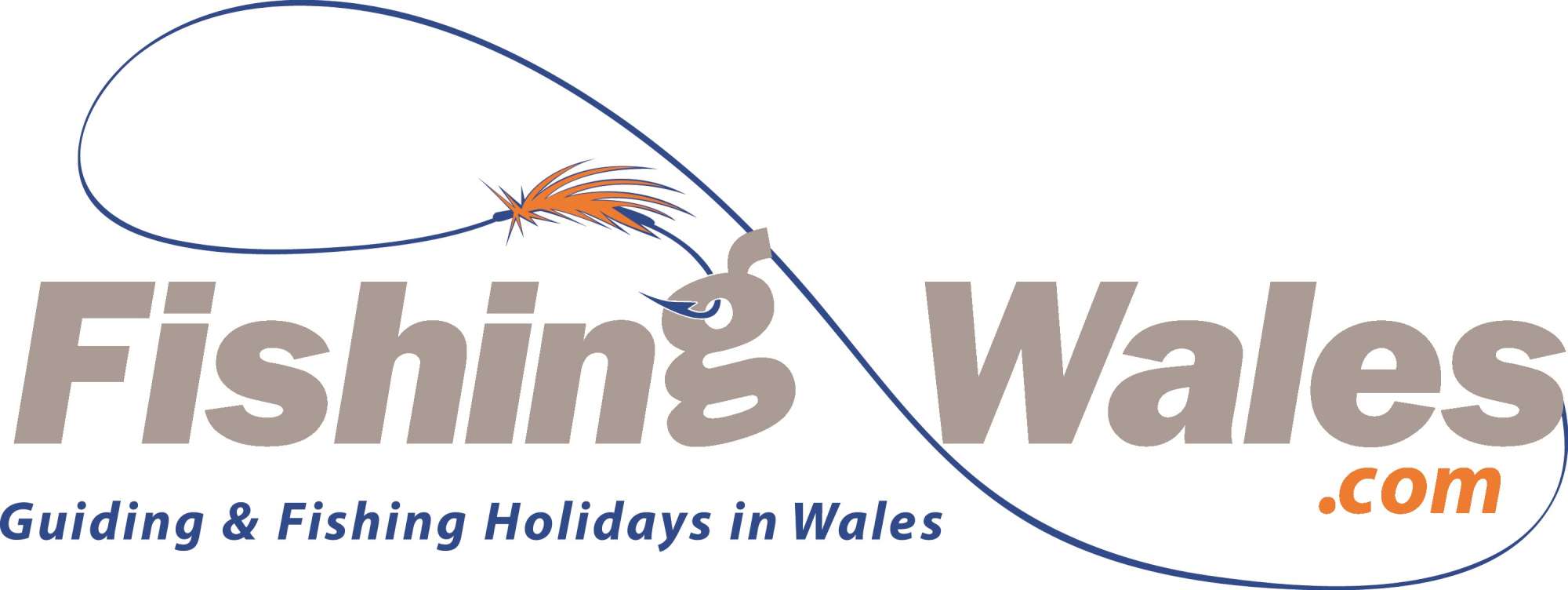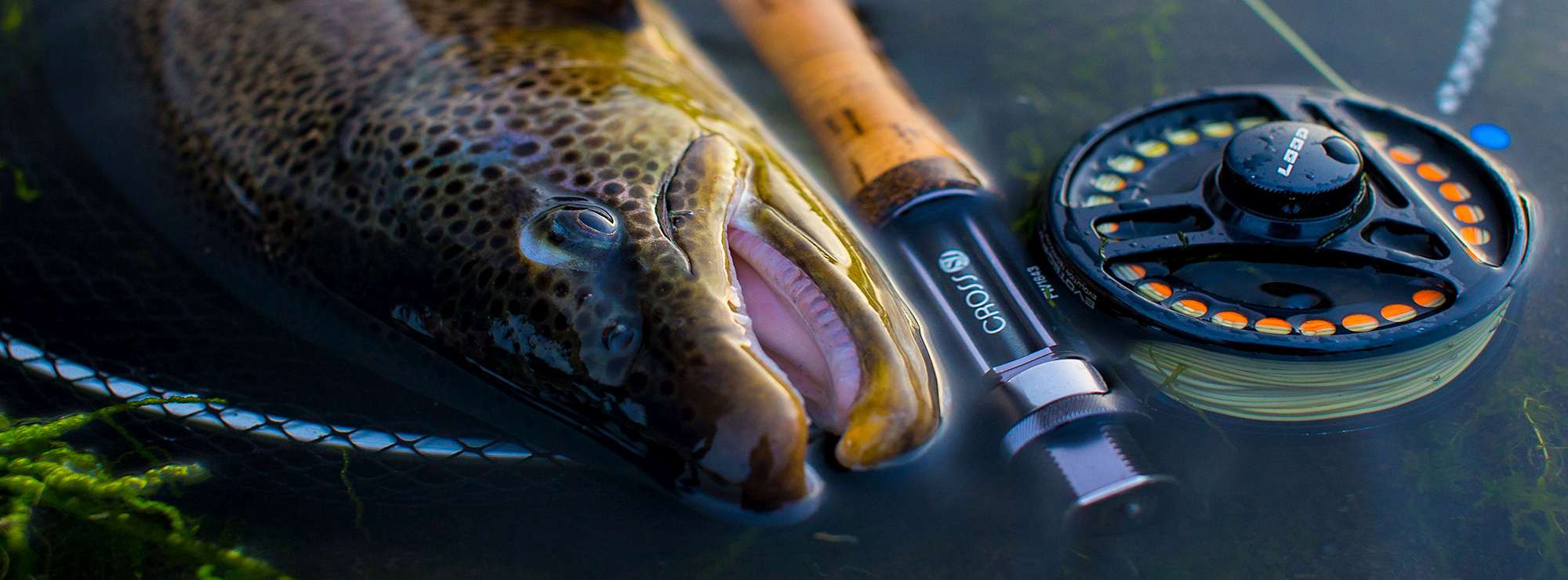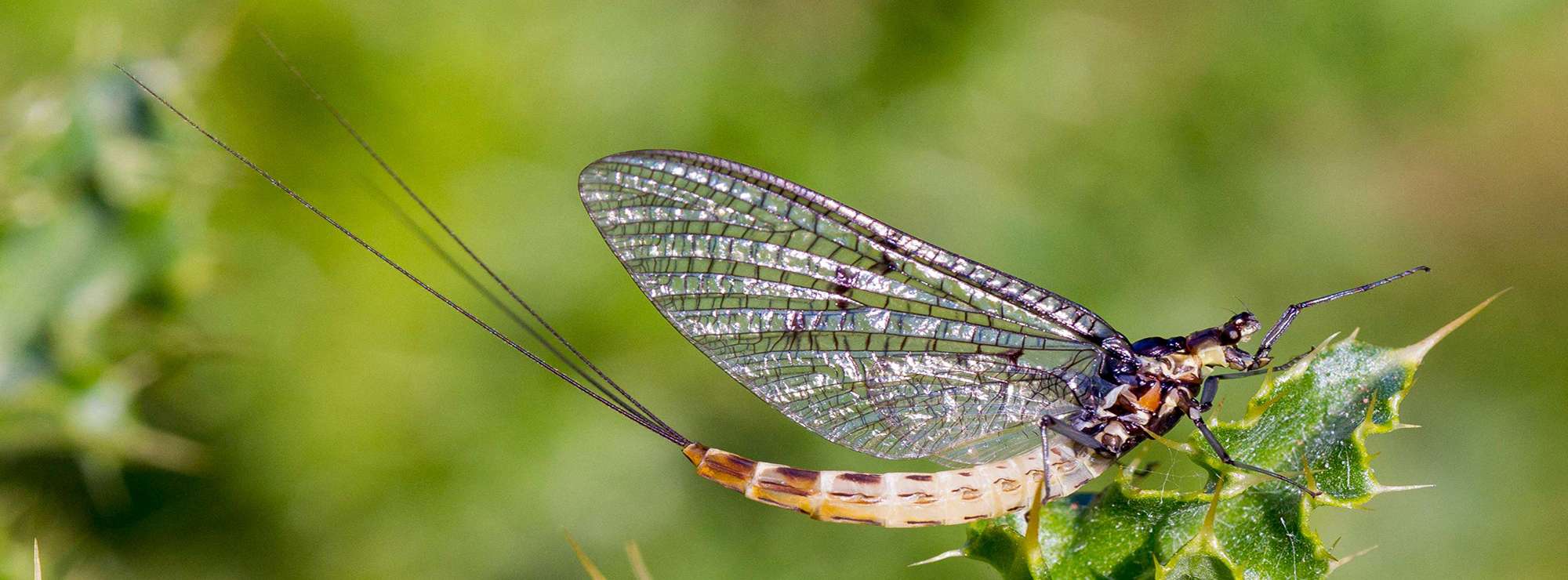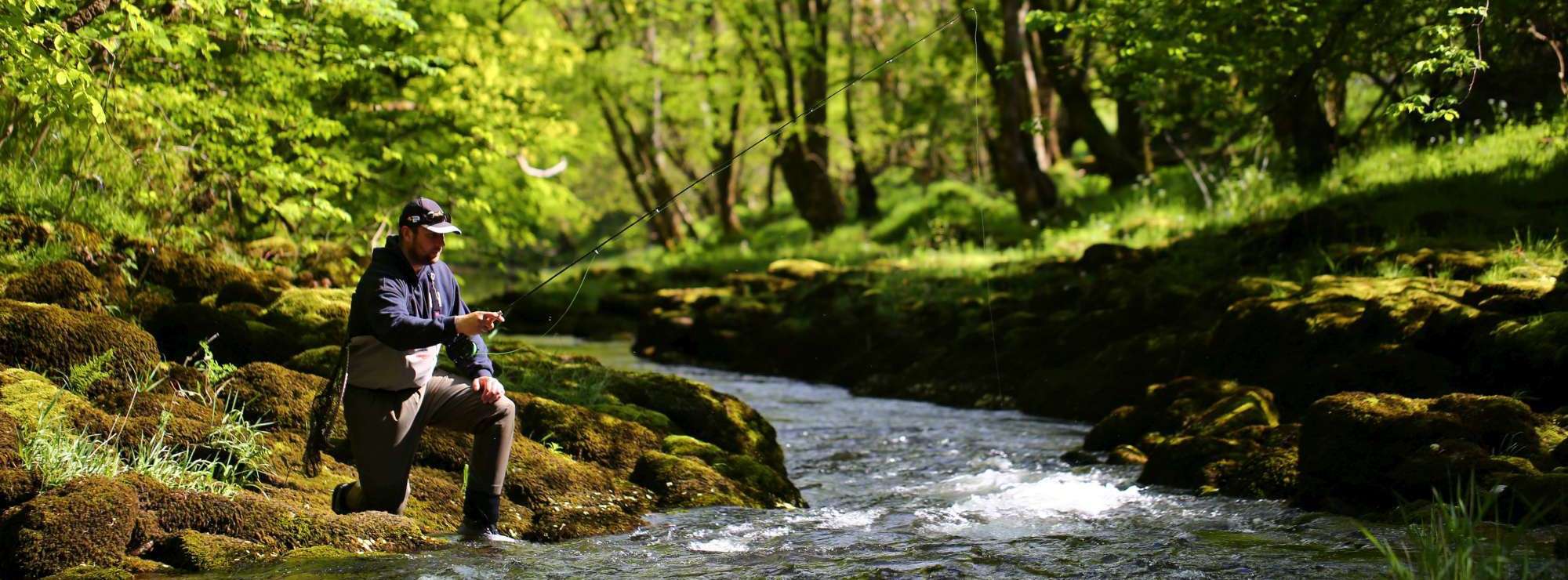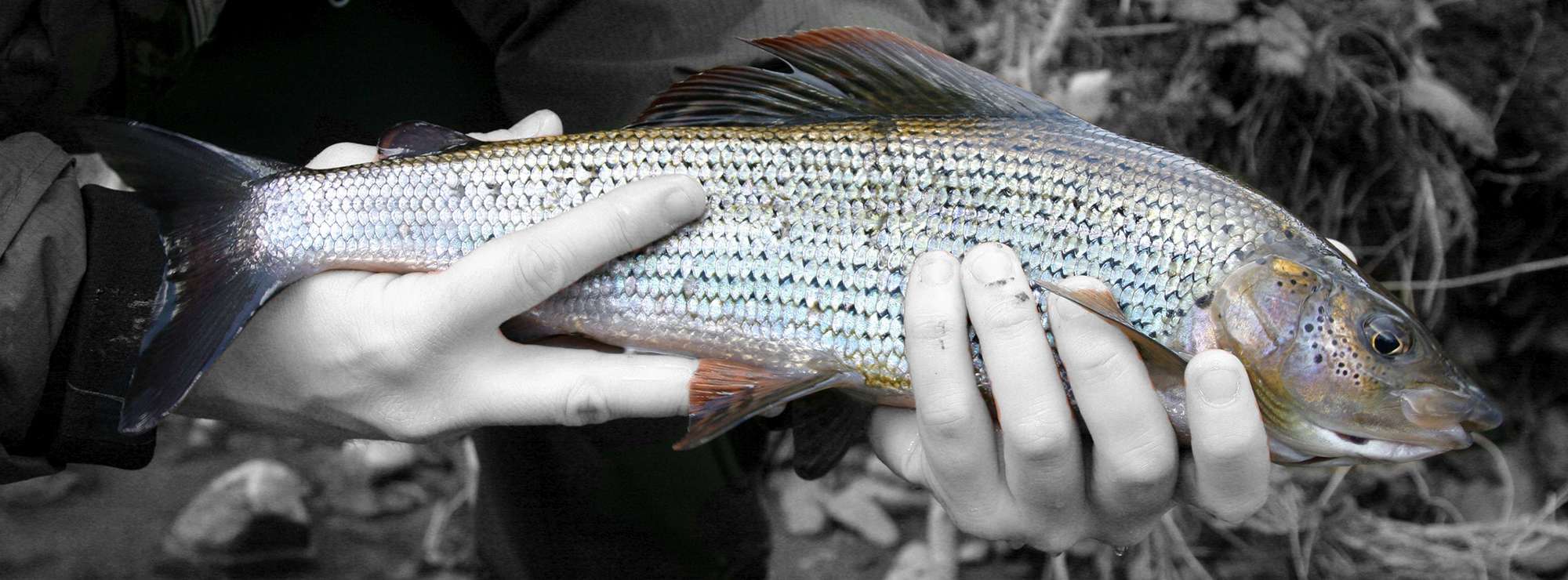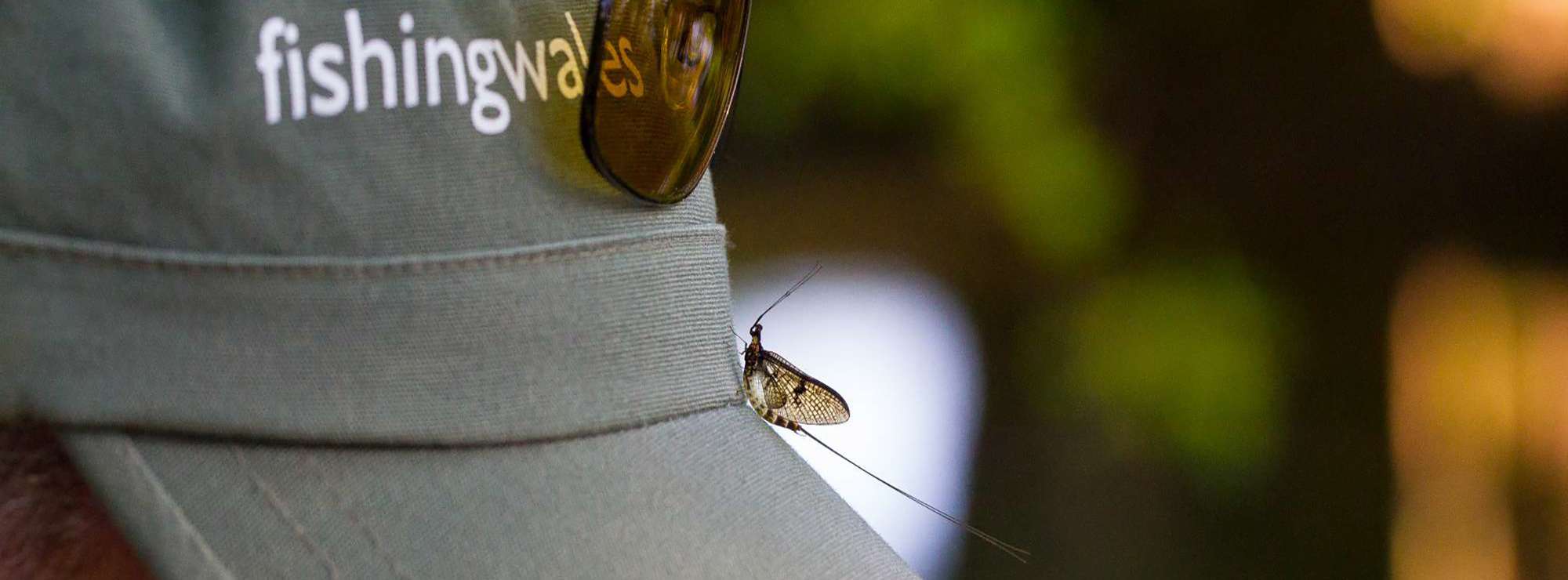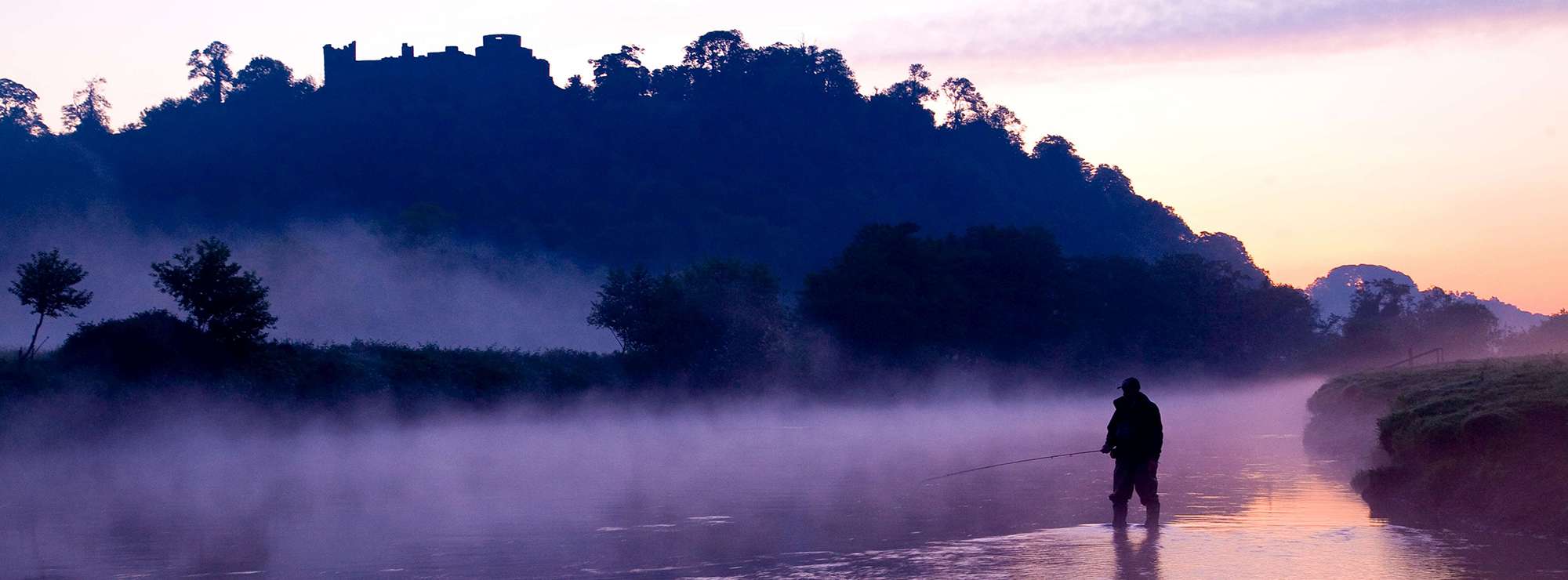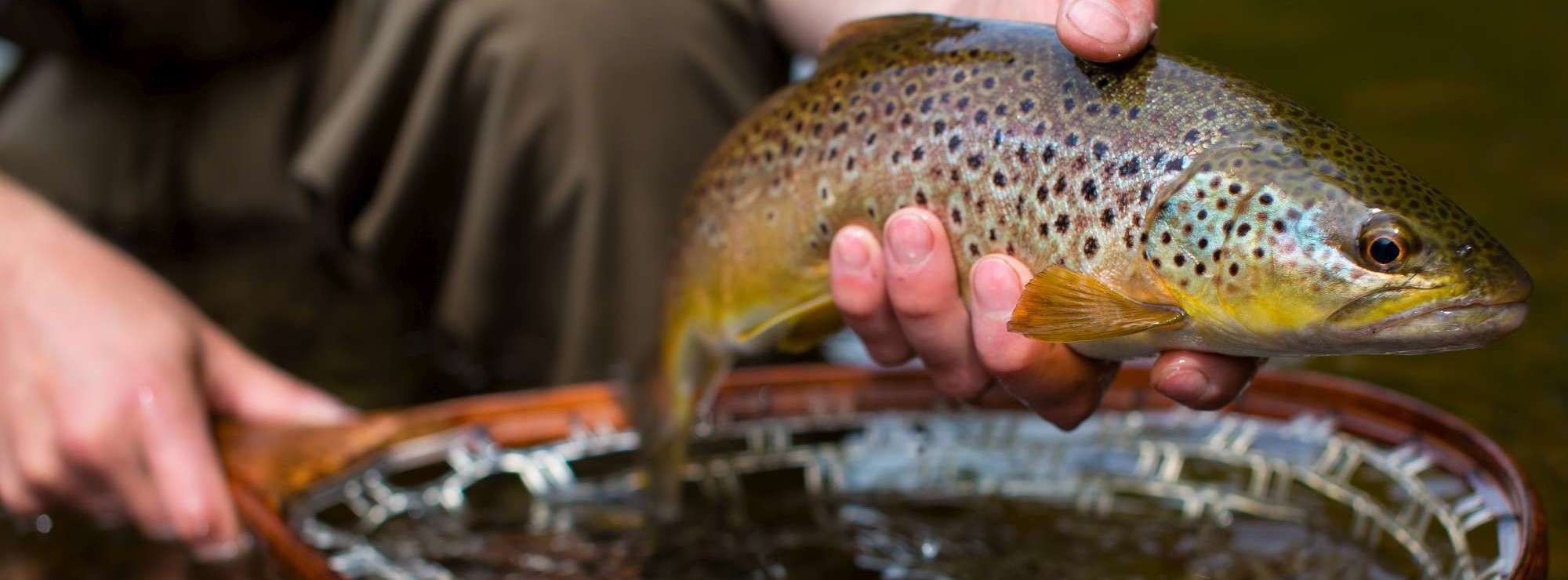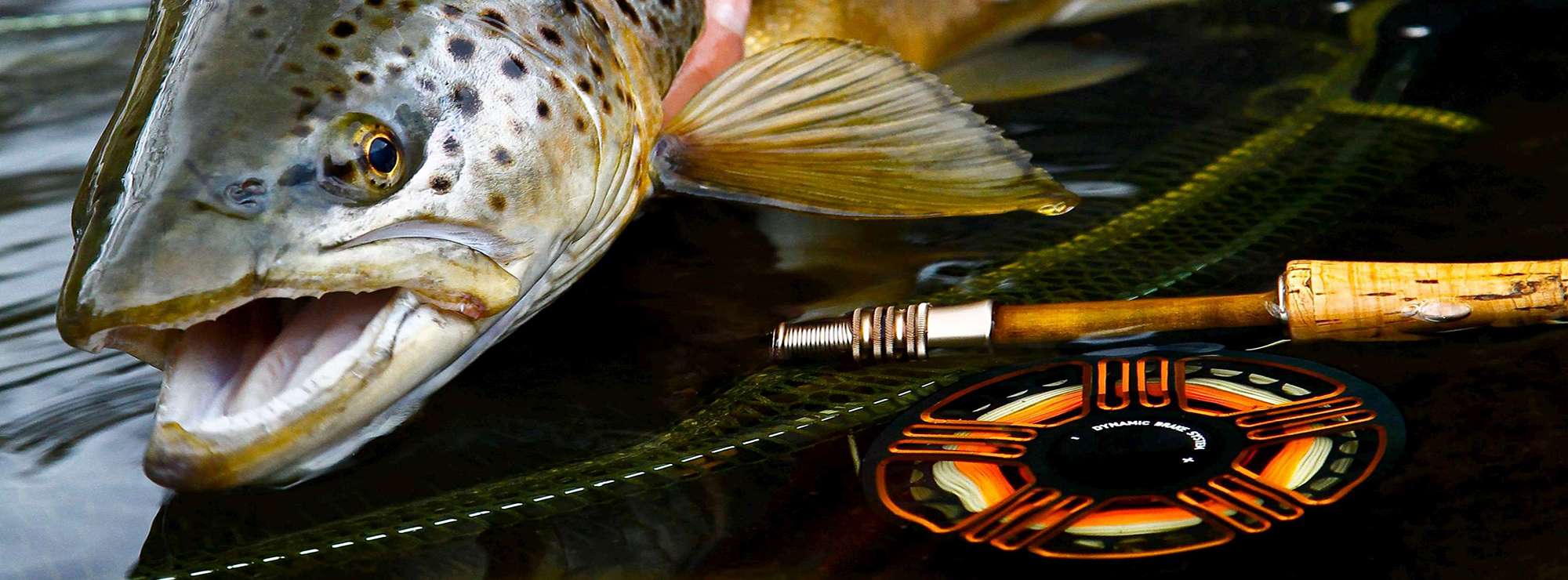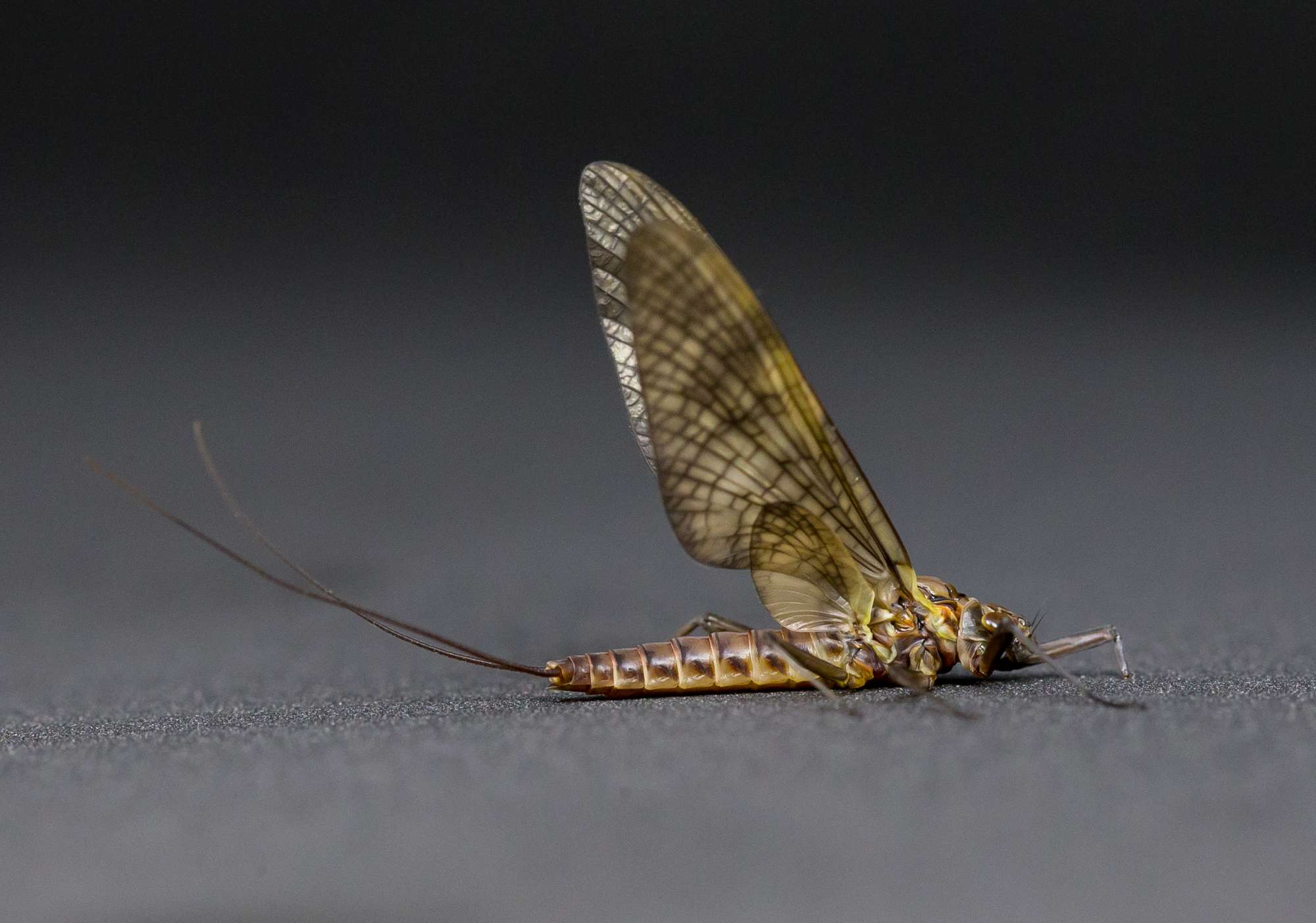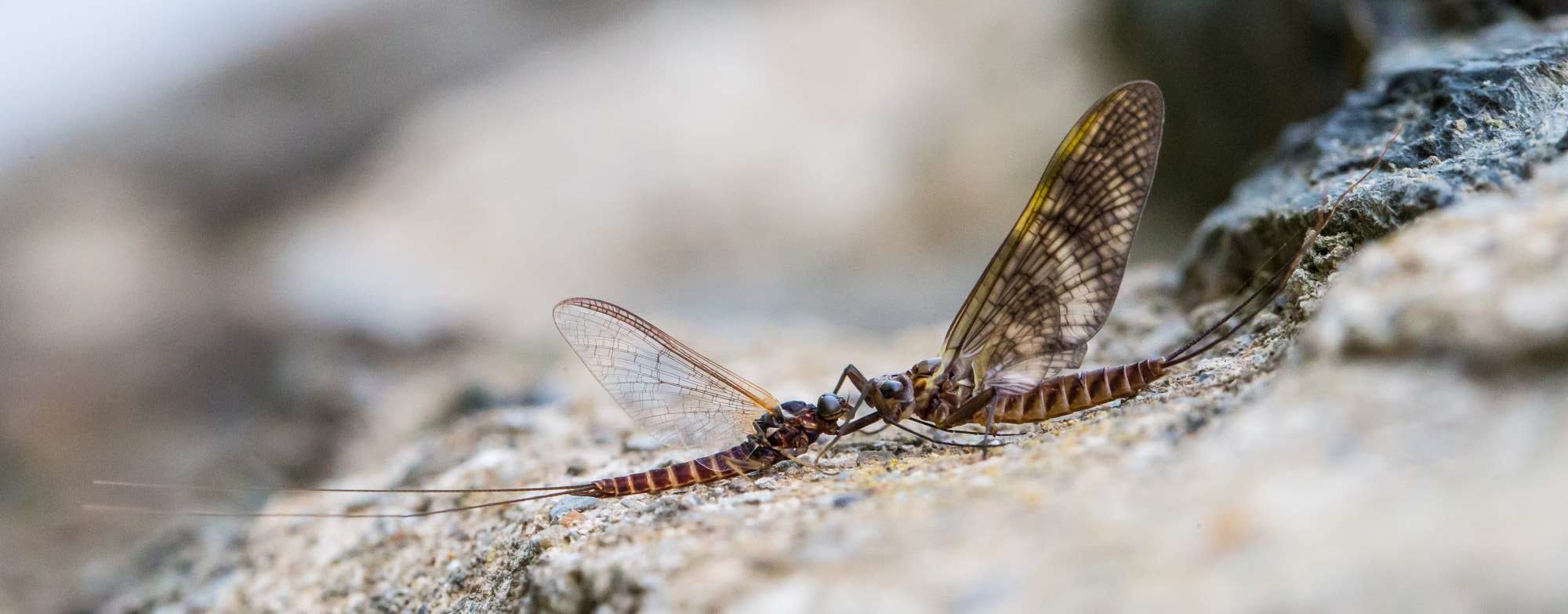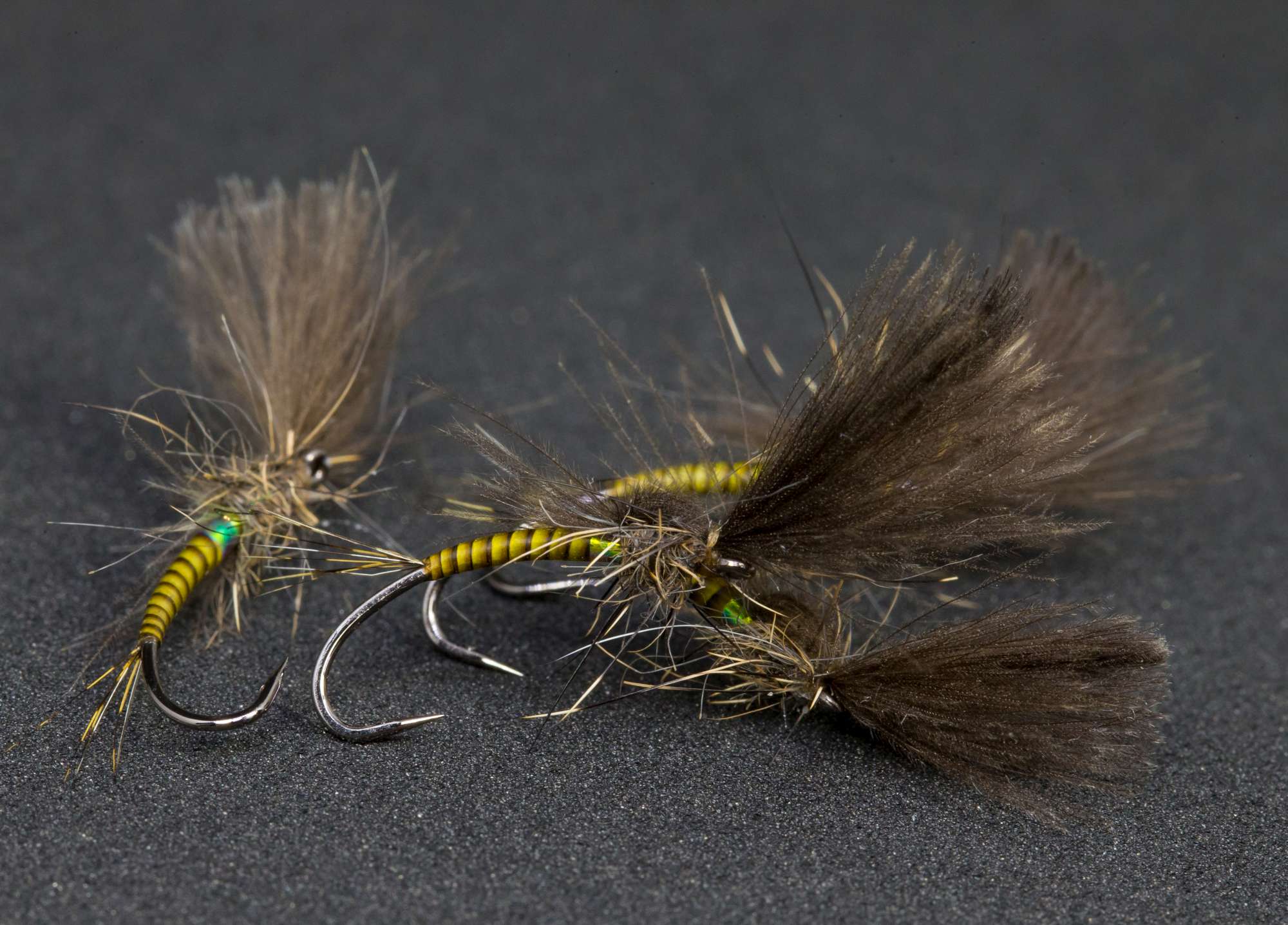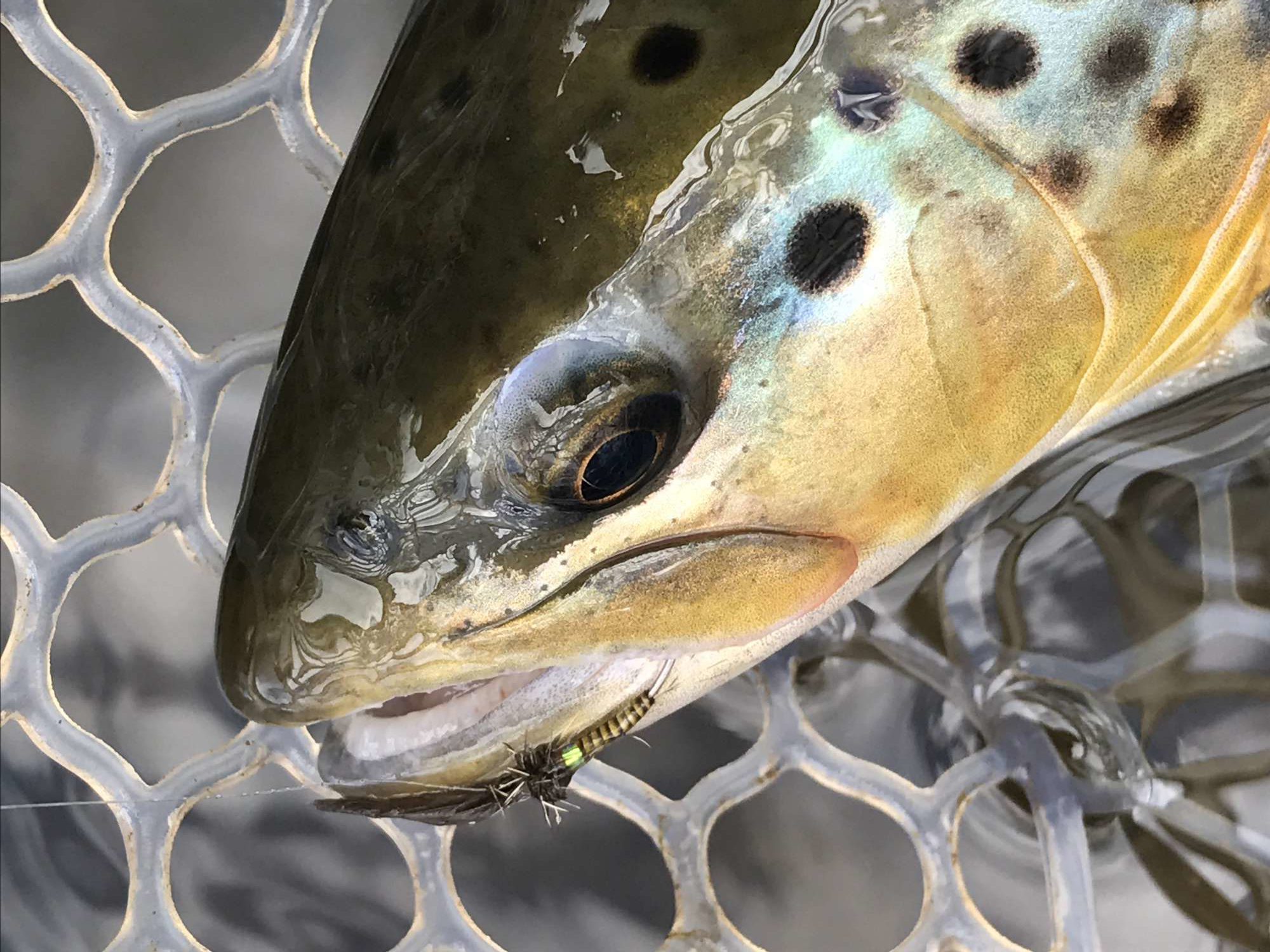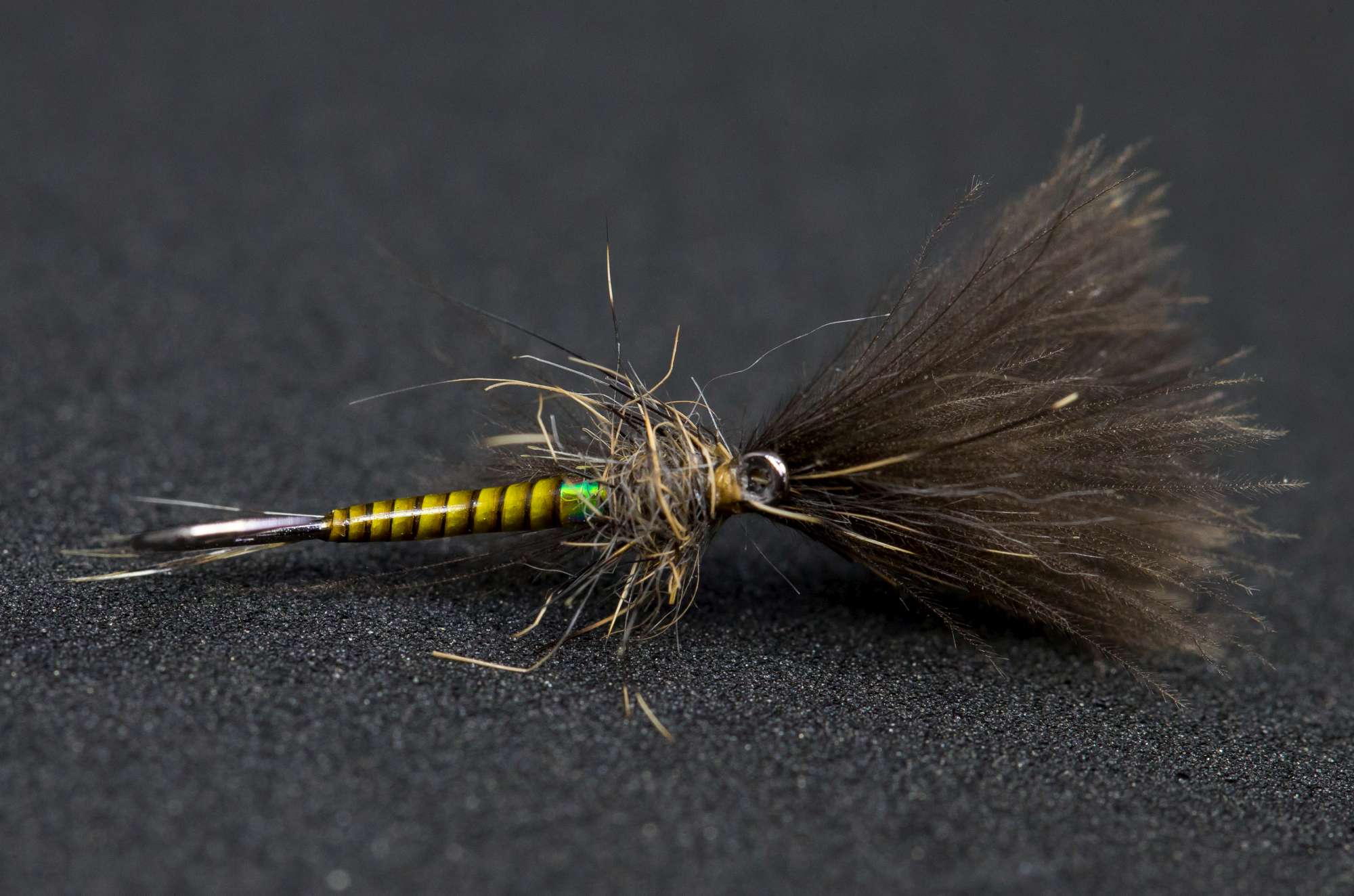An emerger for all seasons – by Steffan Jones
Large Brook Duns are a big meal and one that any self-respecting trout would reluctantly refuse, as each morsel provides substantial sustenance.
As a rule, they do not hatch in the middle of the river and you are more likely to find them in greater numbers closer to the bank or in back eddys. Should you have a current deflection from a stone however, then this will often push the duns out into the stream and towards the trout. The trout will often locate themselves around such deflections, becoming known as likely ambush points and strong feeding lanes. The brook duns will also bring up the wiliest of trout that often hide underneath banks or bankside vegetation, as the trickle of duns may be strongest and most concentrated in such areas; always pay attention for small, unenergetic rises as they are often the largest fish.
The duns often try and scurry across the water’s surface towards the bank after hatching, often climbing up onto rocks after doing so. As such, the adults themselves can be a problematic food source to hone onto for the trout, as they escape before interception. This makes the emergers or cripples a securer meal and a better food source, often favoured as a result.
No need to get complicated with a pattern to cover such eventualities. Indeed, the same pattern dressed in different sizes will cover a myriad of different olives and will see you right throughout most of the season. The important of the pattern to me is that is signals to the trout ‘eat me; I’m not going anywhere’. If they invest energy into intercepting an object they want to be rewarded as a result, so don’t make them question the investment in the first place in order to maximise your chances of interception.
For this, I prefer to fish my emergers with the buoyancy placed out the front of the fly; fished over and beyond the eye, rather than up and over the body. This allows more of the fly to be fished in and under the surface, with only part of the thorax and ‘wing’ fished on and over the surface. I understand and appreciate that this does not follow the natural, as the wings to not emerge first nor do they protrude forward. However, outside of this observation I have not found the trout to question this unorthodox style and I believe the benefits outweigh such semantics.
Tying instructions/ingredients
Hook: Partridge K12ST for the large patterns as it’s a longer hook, then Partridge K14A for the smaller patterns
Thread: Veevus olive (C12) in 12/0
Tail: Coq de leon; don’t go crazy, 6-8 fibres will be ample. Take the thread behind the tail once to help prop and elevate it slightly, preventing the tail from getting wrapped and hindered on the hook bend.
Body: Stripped peacock quill; colour to suit. Golden olive here. Or, try the Magic Quills, which are transparent, adjusting the colour of the base thread accordingly. UV resin over to help protect the fragile quill.
Body2: Between the quill and the thorax place two turns of oval mirage tinsel. UV resin over this too, to protect the tinsel from the trout’s teeth. I believe this tinsel provides a little strike point, but also emulates the air pocket created during the emerging sequence of the natural. It is worth, however, dressing a few without this, just in case you find some particularly picky fish.
Thorax: Fox squirrel; this can be thick to dub. Chop the fibres a couple of times to shorten the fibre length then dub onto the thread after adding some tacky wax to aid the process.
Wing: x3 plumes of natural CDC (adjust amount and plume size according to hook size). Pulled over the thorax and tied shuttlecock style. Make sure to dress a thread base between the eye and the plumes at the head, to help prop and elevate the plumes somewhat, which, in turn, helps counterbalance the fly and force the body subsurface. Also, when drawing the cdc over the thorax do so by drawing from the tips; this will allow a few loose fibres to escape and trail back over the body of the fly.
Tight Lines!
